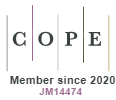Risk Management in Agribusiness Projects through Petri Nets
DOI:
https://doi.org/10.5585/gep.v1i2.17Keywords:
Petri Nets, Agribusiness, Project ManagementAbstract
The agribusiness sectors are increasingly enhancing the technological knowledge within their fields.Not only the competition, which is increasingly fierce, but also for survival in the market. Whenproposing planning for rural enterprise, in business, so you should consider that in this type ofproduction system, and there is a much more significant number of random variables, there is stillmuch less information readily available and that they neither always mirror the reality of fact, givenits momentum. The Petri net, because it is a technique where significant advances have obtained theinformation network is complex and subject to various factors, such as the agribusiness, and toobtain a better development of agroindustrial projects in parallel with the decrease of economicrisks faced by this sector, the objective is then, with this work to develop a risk managementmethodology based on concepts of Petri nets, to be introduced in the management of foodprocessing industries, so that eventually there is a contribution to this area, and that therefore it cangradually evolve to maturity of risk management in projects in the agribusiness entities.References
Aalst, W. V. D. and Hee, K. V. (2002). Workflow management models, methods, and systems. Cambridge, MA, EUA: MIT press.
Barros, J. P. M. P. R. (1996). CpPNeTS: Uma classe de redes de Petri de auto- nível – implementação de um sistema de suporte à sua aplicação e análise. Dissertação de Mestrado em Informática, Faculdade de Ciências e Tecnologia, Universidade Nova de Lisboa, Lisboa, Portugal.
Batalha, O. (2007). Gestão agroindustrial. (3a. ed.), São Paulo: Atlas.
Batalha, M. O.; Buainain, A. M. e Souza, H. M. Filho. (2005). Tecnologia de gestão e agricultura familiar: gestão integrada a agricultura familiar. São Carlos, SP: Edufscar.
Gido, J. e Clements, J. P. (2007). Gestão de projetos. (3a. ed., pp. 76-79), São Paulo: Thomson Learning.
Kerzner, H. (2006). Gestão de projetos: as melhores práticas. (2a. ed., pp.328-342), Porto Alegre: Bookman.
Menezes, K. (2007). Gerência de riscos: risk breakdown structure. Recuperado em 3 setembro, 2007, de <http://klingermenezes.wordpress.com/2007/09/03/gerencia-de-riscos-risk-breakdown-structure/>.
Murata, T. (1989, April). Petri nets: properties, analysis and applications. IEEE Transactions of Engineering Management, New York, 77(4), 541-580.
Penha, D. O.; Freitas, H. C. e Martins, C. A. P. S. (2010, novembro). Modelagem de sistemas computacionais usando redes de petri: aplicação em projeto, análise e avaliação. Anais do IV Escola Regional de Informática RJ/ES, Rio das Ostras, RJ, Brasil, 26-28. Recuperado em 3 outubro, 2010, de http://www.sbc.org.br/bibliotecadigital/download.php?paper=33
PMI – Project Management Institute (2004). A guide to the Project Management Body of Knowledge - PMBOK® 2004 Guide. (3a. ed., tradução livre). Newtown Square, PA, USA: Project Management Institute.
Tüller, M.; Cullen, J. e Trüb, J. (2009). Apostando a fazenda? Riscos agrícolas no Brasil. Zurich: Swiss Reinsurance Company Ltd.
Yamada, M. C.; Porto, J. V. e Inamasu, R.Y. (2002, junho). Aplicação dos conceitos de modelagem e de redes de Petri na análise do processo produtivo da indústria sucroalcooleira. Revista Pesquisa Agropecuária Brasileira. Brasília, 37(6), 809-820.
Downloads
Published
How to Cite
Issue
Section
- Abstract 277
- PDF (Português (Brasil)) 201






